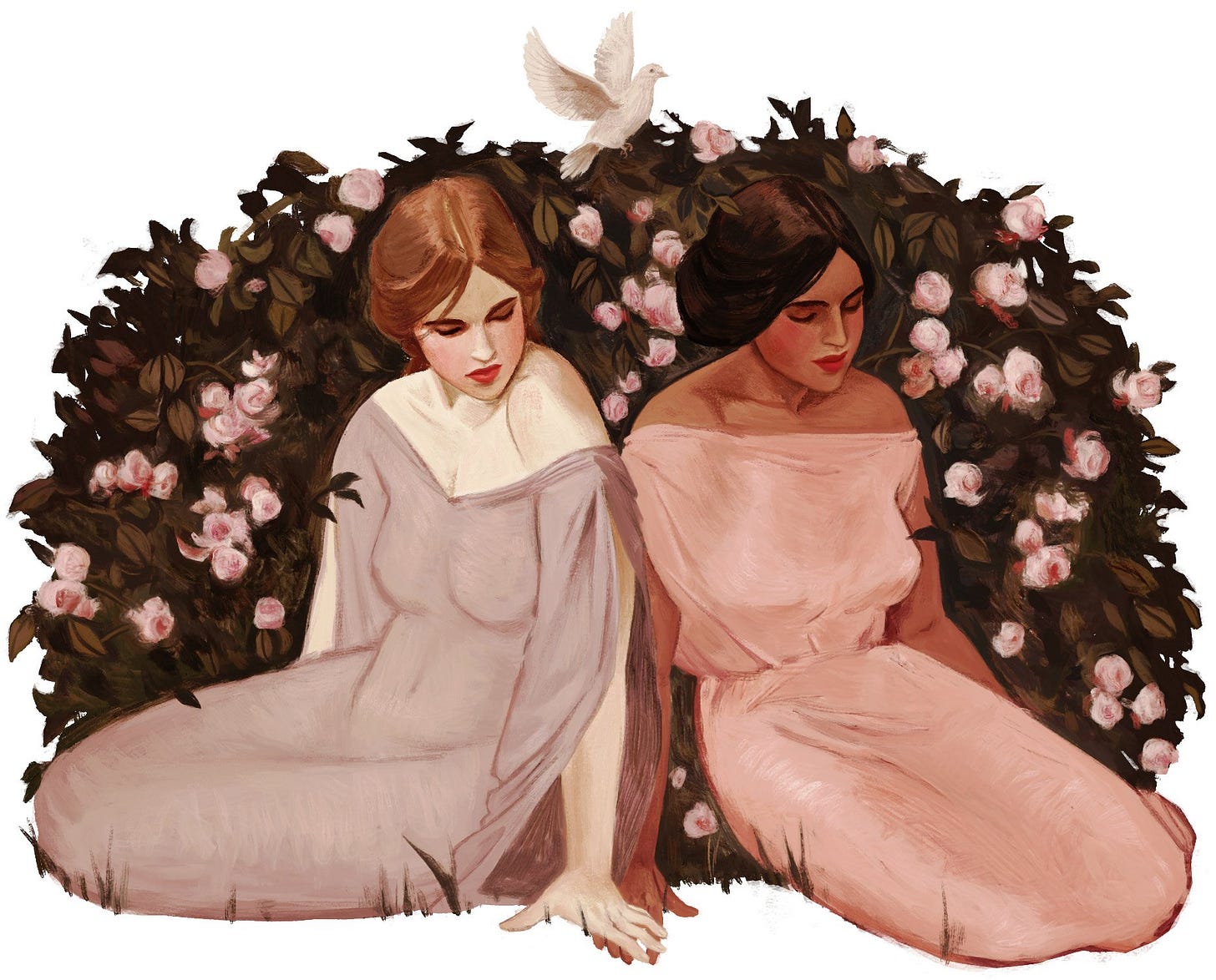
Iridescent Pigeons is a collection of poems that celebrates love in all its different forms, while not being afraid to explore how love also hurts; you hurt and you get hurt. In addition to love, it touches on themes such as nature, identity, loss, the passage of time, childhood and motherhood. All themes are portrayed with attention, gratitude and presence.
As a nature lover myself I felt particularly drawn to the portrayal of nature, which is described in a way that can be compared to Mary Oliver's poetry. The language celebrates nature and emphasises its paradoxical nature: in all its simplicity and accessibility, it is filled with a depth that can only be deciphered by a skilled and attentive individual. The poems remind us that we can walk along a trail and see trees, plants and animals, as physical fixed objects, or we can walk along the same trail and see a whole new world open up before us. Suddenly we notice how the colours change, how the leaves move with the wind and how the plant you overlooked can give you a calming effect in the form of a cup of tea.
Sometimes I can’t get back to sleep,
while lemon balm breathes
let me soothe you beyond the window screen
and frogsong trembles webs seedpearled with dew.From the poem “Then Suddenly I Know”

Queerness and the celebration of sapphic love is another big theme in Iridescent Pigeons. This is shown, for example, through a love poem to the author's wife as well as through Sappho and Virginia Woolf, two key figures in lesbian history. The influence of Sappho is evident not only in the poems “Sapphic stanza 1”, “Sapphic stanza 2” and “Sapphic stanza 3”, but also in the use of nature as a metaphor and symbol of same-sex love. For example, the sea is used as a metaphor for love in the poem “Not Fell but Fall”, which ends with the following lines:
How do oceans feel
about these languid vagabonds?Against her skin I knew, I think,
how seaweed feels.
The sea must feel a thing like love.
Sappho herself is known for having used nature as a symbol for sapphic desire and women’s beauty. Furthermore, nature as a physical place is important for the queer history as it offered loving couples a safe place outside the bustling cities with their watchful (and hateful) eyes.1 Additionally, in Swedish literary scholar Liv Saga Bergdahl’s doctoral dissertation2 it is noted that “nature imagery in Swedish lesbian novels from the 1930s makes love between women come across as natural, thus challenging the contemporary legislation against homosexuality, which defined homosexuality as ‘against nature’”.3
Woolf is also celebrated in the poetry collection through the title of a poem. This time the poem is named after a sentence from one of Woolf's love letters to Vita Sackville-West, thus highlighting the theme of sapphic love. The cento poem, “Wild and Frail and Beautiful” is an homage to Woolf’s third novel Jacob’s Room. The novel follows the titular character Jacob whose existence is pieced together through the other characters' impressions of him. It explores themes of identity, loss, and the passage of time – themes Iridescent Pigeons also touches upon.
Childhood summers
I would stand waist-deep
within the gentled sea
as if it were my vast and rippling skirt
and sunlight my chemise.
From poem “Not Fell but Fall”
Lastly, I think the title of the poetry collection is genius when viewed at as a symbol for love. For Aphrodite, the ancient Greek goddess of love, pleasure and beauty, was associated and often depicted with doves. Pigeons and doves belong to the same family of birds, and their names are often used interchangeably. Therefore, I now draw a parallel between pigeons and Aphrodite. Furthermore, Aphrodite frequently appears in the poems of Sappho, see for example this famous line: Sweet mother, I cannot weave – / slender Aphrodite has overcome me / with longing for a girl. In other words, not just one but two of the poetry collection's central themes are addressed by the title.
ARC received in exchange for an honest review. Thank you Candace!
See Bonnie Zimmerman’s The Safe Sea of Women: Lesbian Fiction 1969-1989 (1990) for further reading.
Liv Saga Bergdahl, Kärleken utan namn: Identitet och (o)synlighet i svenska lesbiska romaner [diss.] (2010).
Bergdahl, 2010, as cited in Jenny Björklund’s Lesbianism in Swedish Literature: An Ambiguous Affair (2014), s. 32.





